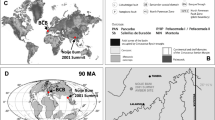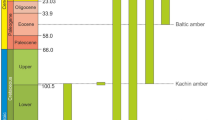Abstract
IN a previous communication to NATURE some years ago (May 18, 1929) I gave a short description of a remarkable genus Permotipula, represented by a complete forewing from Warner's Bay, N.S.W., and of Upper Permian Age. Although very primitive by comparison with existing types of Diptera, this wing was regarded by me as being definitely Tipuloid and lying well within the order. I added the following remarks: ” The wing is of the greatest interest, because any student of venation would classify it as dipterous and nothing else, and yet we do not know whether the insect to which it belonged had four wings or only two! Also, it is the oldest known dipterous type of wing by many millions of years.”
This is a preview of subscription content, access via your institution
Access options
Subscribe to this journal
Receive 51 print issues and online access
$199.00 per year
only $3.90 per issue
Buy this article
- Purchase on Springer Link
- Instant access to full article PDF
Prices may be subject to local taxes which are calculated during checkout
Similar content being viewed by others
Author information
Authors and Affiliations
Rights and permissions
About this article
Cite this article
TILLYARD, R. The Ancestors of the Diptera. Nature 139, 66–67 (1937). https://doi.org/10.1038/139066a0
Issue Date:
DOI: https://doi.org/10.1038/139066a0
This article is cited by
-
Rediscovered: Permotipula patricia, the oldest known fly
Naturwissenschaften (1989)
-
Phosphorus Exchange in Yeast
Nature (1937)
Comments
By submitting a comment you agree to abide by our Terms and Community Guidelines. If you find something abusive or that does not comply with our terms or guidelines please flag it as inappropriate.



